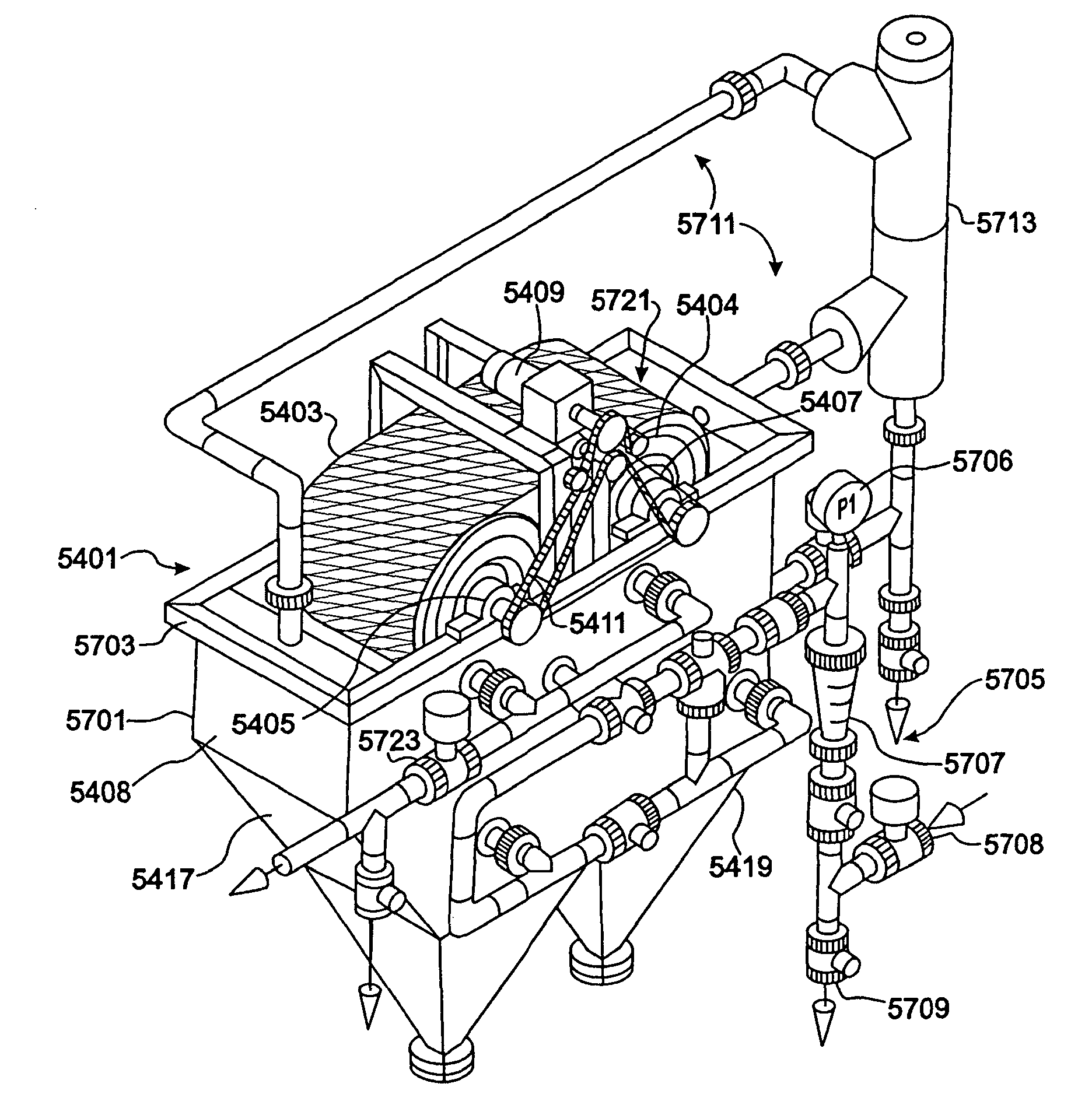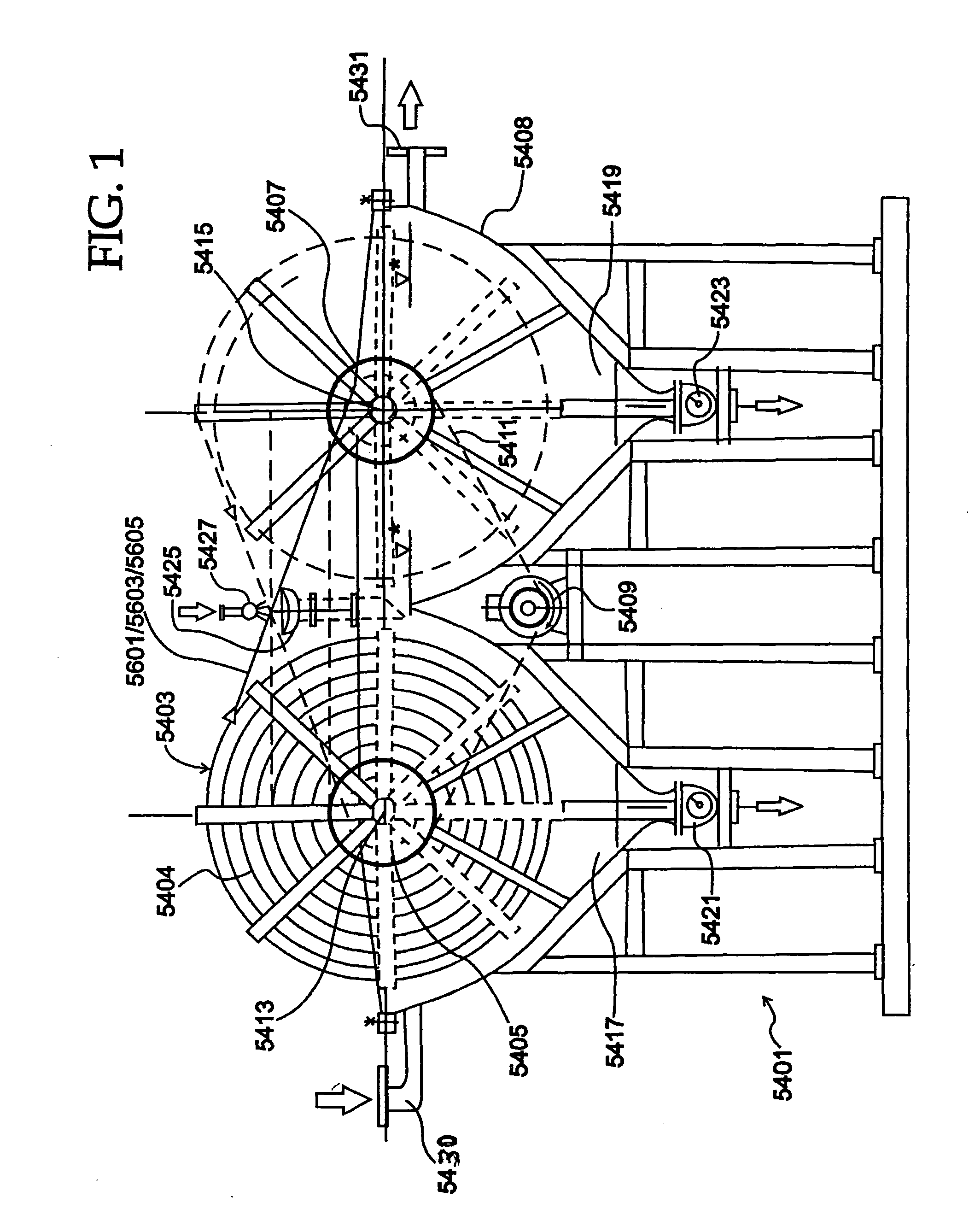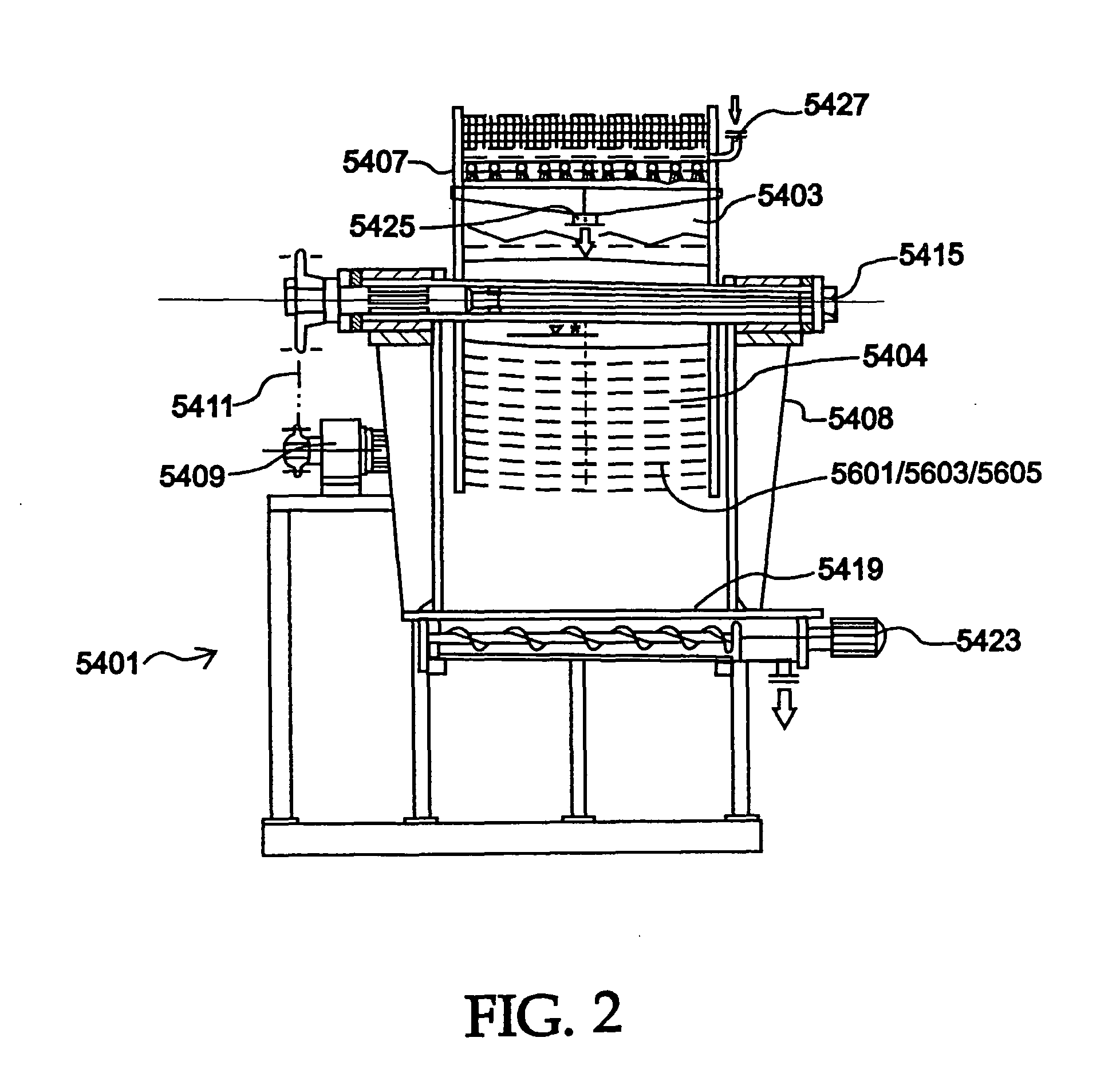Biological wastewater treatment apparatus and methods using moving belt contractor
a wastewater treatment and moving belt technology, applied in the direction of multi-stage water/sewage treatment, separation process, treatment water nature, etc., can solve the problems of not all effluent treatment requires the same technology, affecting ongoing operations financially and in terms of operational continuity, and largely incomplete treatment, etc., to achieve convenient cleaning and maintenance, reduce manufacturing and operating costs, and energy saving
- Summary
- Abstract
- Description
- Claims
- Application Information
AI Technical Summary
Benefits of technology
Problems solved by technology
Method used
Image
Examples
Embodiment Construction
[0041]FIGS. 1 through 6 illustrate various embodiments of assembly 5401, an assembly adapted for treatment of biological wastewater utilizing a rotating biological contactor. Assembly 5401 may be used as a treatment to remove contaminants such as emulsified oil / grease, anaerobic iron accepting bacteria, as well as trace amounts of dissolved iron, manganese and methane gas from an influent feed water stream.
[0042]Assembly 5401 of this invention utilizes immersed conveyor apparatus 5403 holding a coil 5404 of woven (and thus porous) plastic fabric media formed as a conveyor belt fabric material 5601 / 5603 / 5605 in a long sheet (for example, 1,500 m×1 m), the various embodiments of which are shown in FIG. 56. The conveyor belt could be coated with ZEORAP using a fluidized bed process (for example, silicon fog) prior to seeding with microbial cultures. This provides faster and stronger adherence of the seedling to the rough ZEORAP surface structure. The ZEORAP becomes a catalyst for the c...
PUM
| Property | Measurement | Unit |
|---|---|---|
| temperature | aaaaa | aaaaa |
| length | aaaaa | aaaaa |
| length | aaaaa | aaaaa |
Abstract
Description
Claims
Application Information
 Login to View More
Login to View More - R&D
- Intellectual Property
- Life Sciences
- Materials
- Tech Scout
- Unparalleled Data Quality
- Higher Quality Content
- 60% Fewer Hallucinations
Browse by: Latest US Patents, China's latest patents, Technical Efficacy Thesaurus, Application Domain, Technology Topic, Popular Technical Reports.
© 2025 PatSnap. All rights reserved.Legal|Privacy policy|Modern Slavery Act Transparency Statement|Sitemap|About US| Contact US: help@patsnap.com



